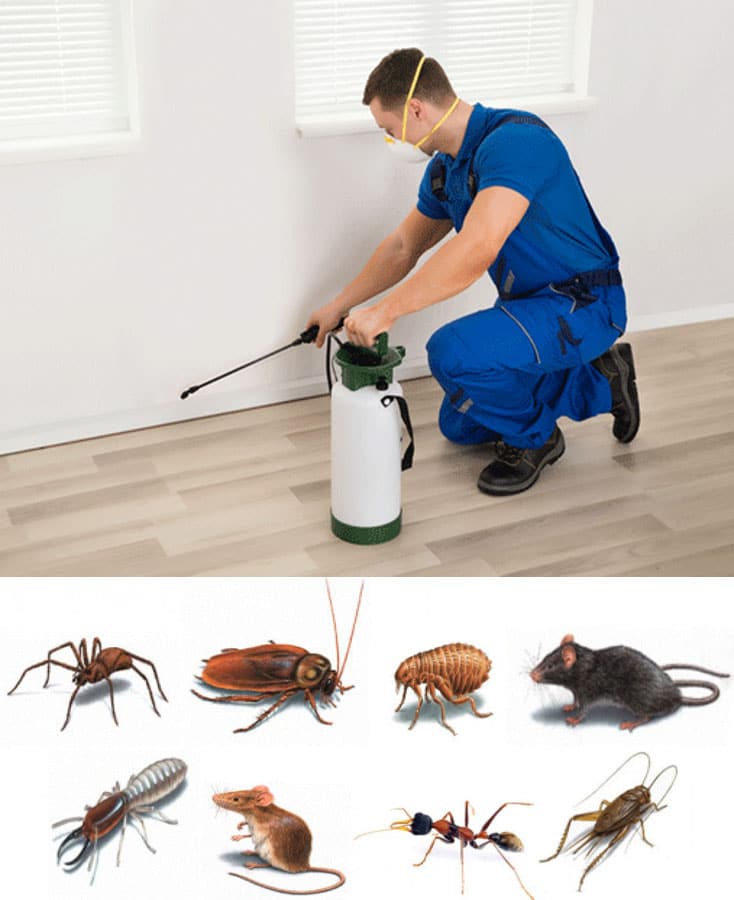Effective A1 Bed Bug Treatment in Charlotte - Safe and Proven Methods
Wiki Article
Bed Insect Therapy Break Down: Comparing Chemical Vs. Non-Chemical Solutions
In the realm of parasite control, especially when managing the relentless concern of bed insects, the selection between chemical and non-chemical therapy services can be a crucial one. Both approaches use distinctive benefits and disadvantages, affecting factors such as efficiency, safety and security factors to consider, and total price. By analyzing the nuanced information of each technique, a more clear understanding of which path to go after in resolving a bed insect infestation can be attained.Performance of Chemical Treatments
Chemical therapies for bed bug invasions have been commonly identified for their powerful and quick effectiveness in eliminating these insects. When thinking about the efficiency of chemical treatments, it is critical to recognize that they can offer a quick and thorough solution to a bed pest issue.In addition, chemical therapies have the benefit of supplying recurring impacts, indicating that they can remain to remove bed bugs even after the first application. This residual activity is especially advantageous in combating any type of possible re-infestations. Additionally, the rapid activity of chemical treatments can bring relief to people facing serious bed pest infestations, permitting them to reclaim control of their living rooms rapidly.
Safety Worry About Chemical Solutions
When making use of chemical solutions for bed insect treatment is making certain the safety of passengers and the environment,One critical facet that requires mindful factor to consider. While chemical treatments can be efficient in getting rid of bed pests, they might present dangers if not managed effectively. Among the key safety and security interest in chemical remedies is the possible damage they can cause to human health. Exposure to particular chemicals utilized in bed insect treatments can lead to respiratory problems, skin irritation, or other adverse responses, specifically in people with pre-existing problems or sensitivities. Additionally, improper application or dose of chemical pesticides can cause poisonous deposits sticking around in the treated area, posturing long-lasting wellness risks to occupants.In addition, the environmental influence of chemical services is another substantial consideration. Some pesticides used in bed bug treatments may be damaging to helpful insects, wildlife, and ecological communities if they leach into the dirt or water supply. It is necessary to make use of chemical treatments judiciously, following safety and security guidelines, and thinking about less poisonous alternatives to reduce these risks and guarantee the efficient and secure management of bed insect infestations.
Benefits of Non-Chemical Techniques
Taking into consideration the prospective safety and security problems and ecological effect connected with chemical remedies for bed bug therapy, checking out non-chemical strategies presents an encouraging alternative with a number of distinctive benefits. Non-chemical approaches offer a more secure alternative for houses, particularly those with individuals, family pets, or youngsters delicate to severe chemicals. These strategies remove the threats of direct exposure to harmful materials, decreasing the capacity for unfavorable health results. Moreover, non-chemical treatments are environmentally pleasant, as they do not contribute to air or water contamination, making them go now a sustainable option for insect control.Additionally, non-chemical options can be reliable in targeting bed bugs, consisting of hard-to-reach locations where chemical treatments may not permeate - A1 exterminator charlotte nc. Approaches such as warm treatment, vacuuming, vapor cleaning, and cushion encasements supply complete removal without the use of unsafe chemicals.
Limitations of Non-Chemical Treatments

In addition, non-chemical treatments usually require several applications to attain effective elimination. This can be time-consuming and may not constantly assure complete elimination of all bed bugs and their eggs, specifically in hard-to-reach or concealed areas.
Furthermore, the success of non-chemical treatments greatly depends on correct application and thoroughness, which can be testing for individuals without professional knowledge. Insufficient application of non-chemical approaches may cause incomplete removal, bring about persistent invasions and the need for added treatments.
For that reason, while non-chemical therapies have their benefits, it is important to acknowledge these limitations and consider them when figuring out one of the most reliable approach for managing bed bug invasions.
Price Comparison: Chemical Vs. Non-Chemical Options
Offered the limitations linked with non-chemical treatments, a crucial element to examine in the context of bed pest monitoring is the cost comparison between chemical and non-chemical alternatives. In comparison, non-chemical therapies like warmth treatment or steam can be more expensive, with costs ranging from $1,000 to $6,000 for an entire home. While the first cost of chemical treatments may appear reduced, multiple therapies might be needed to completely remove the infestation, potentially increasing the overall expense.Conclusion

Thinking about the prospective safety and security worries and environmental effect connected with chemical services for bed pest treatment, checking out non-chemical strategies presents a promising choice with numerous distinct benefits.Provided the constraints linked with non-chemical treatments, a crucial aspect to review in the context of bed bug administration is the expense comparison in between chemical and non-chemical alternatives. In contrast, non-chemical therapies like heat therapy or steam can be more costly, with expenses varying from $1,000 to $6,000 for a whole home. While the initial cost of chemical therapies may appear reduced, numerous treatments click here for more may be called for to fully eradicate the problem, potentially raising the total price.In conclusion, when contrasting chemical and non-chemical bed insect therapy alternatives, it is important to consider effectiveness, safety, benefits, limitations, and price.
Report this wiki page